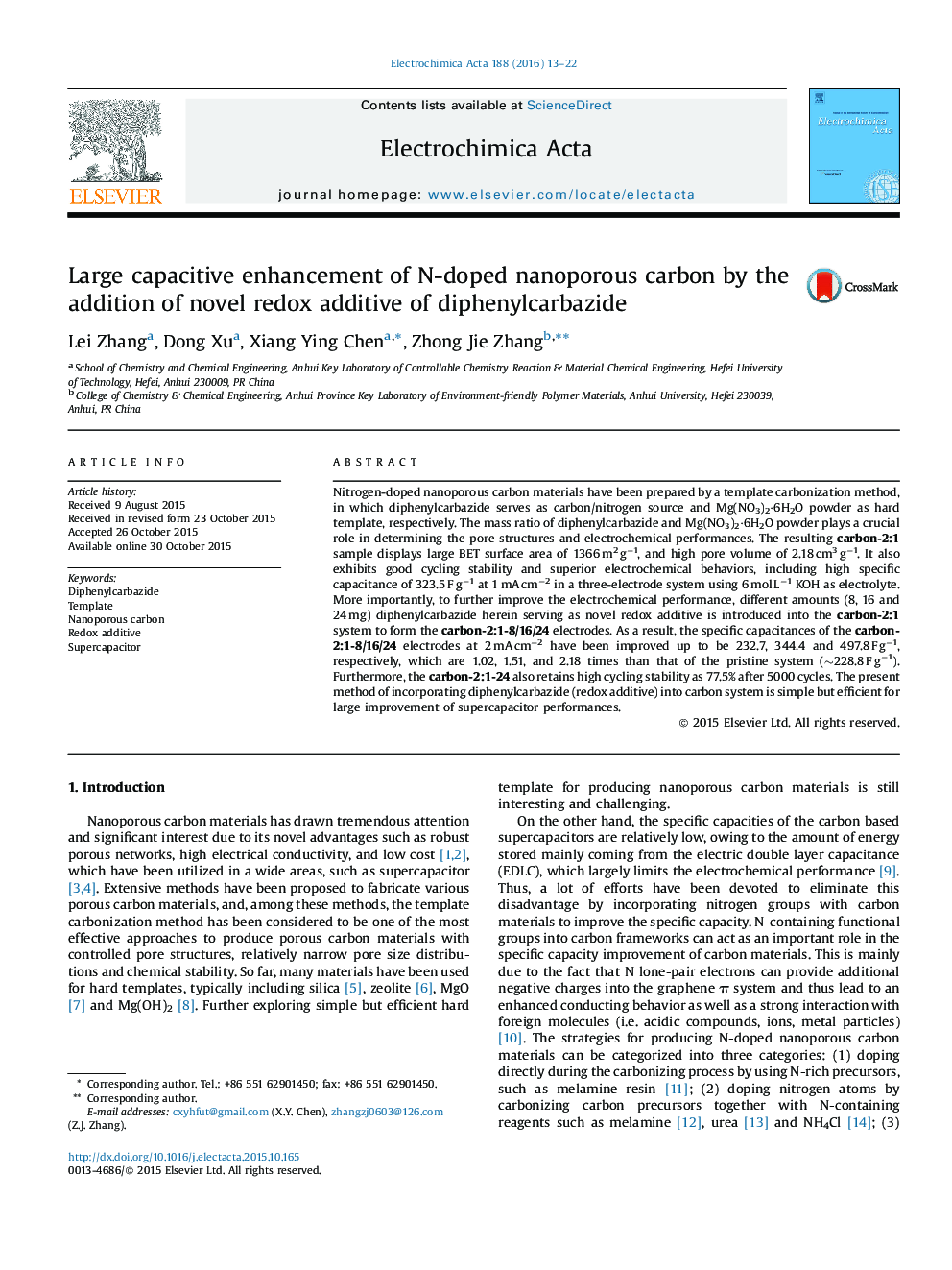| Article ID | Journal | Published Year | Pages | File Type |
|---|---|---|---|---|
| 183326 | Electrochimica Acta | 2016 | 10 Pages |
•N-doped carbon materials are derived from diphenylcarbazide.•Diphenylcarbazide can also serve as novel redox additive.•Incorporating redox additive into electrode is simple but highly effective.•The specific capacitance has been largely improved up to 497.8 F g−1.
Nitrogen-doped nanoporous carbon materials have been prepared by a template carbonization method, in which diphenylcarbazide serves as carbon/nitrogen source and Mg(NO3)2·6H2O powder as hard template, respectively. The mass ratio of diphenylcarbazide and Mg(NO3)2·6H2O powder plays a crucial role in determining the pore structures and electrochemical performances. The resulting carbon-2:1 sample displays large BET surface area of 1366 m2 g−1, and high pore volume of 2.18 cm3 g−1. It also exhibits good cycling stability and superior electrochemical behaviors, including high specific capacitance of 323.5 F g−1 at 1 mA cm−2 in a three-electrode system using 6 mol L−1 KOH as electrolyte. More importantly, to further improve the electrochemical performance, different amounts (8, 16 and 24 mg) diphenylcarbazide herein serving as novel redox additive is introduced into the carbon-2:1 system to form the carbon-2:1-8/16/24 electrodes. As a result, the specific capacitances of the carbon-2:1-8/16/24 electrodes at 2 mA cm−2 have been improved up to be 232.7, 344.4 and 497.8 F g−1, respectively, which are 1.02, 1.51, and 2.18 times than that of the pristine system (∼228.8 F g−1). Furthermore, the carbon-2:1-24 also retains high cycling stability as 77.5% after 5000 cycles. The present method of incorporating diphenylcarbazide (redox additive) into carbon system is simple but efficient for large improvement of supercapacitor performances.
